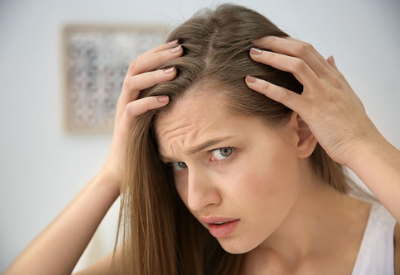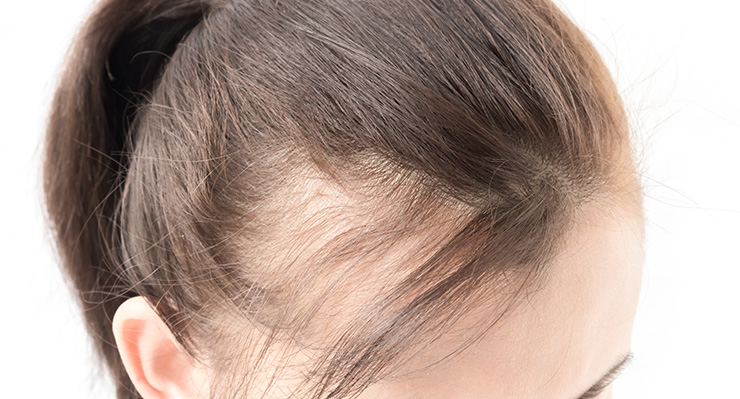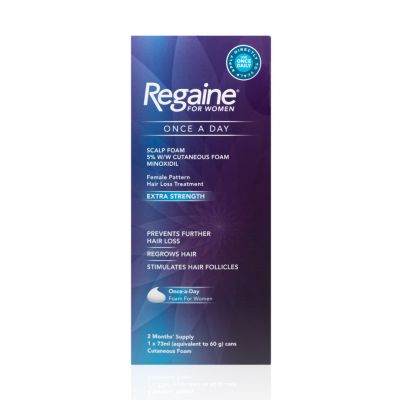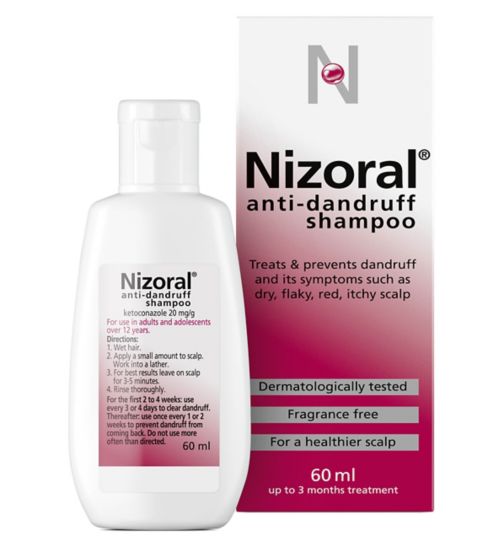
Hair loss doesn’t just affect men, it is also common in women, too. 50% of women suffer from some form of hair loss by the age of 40, and up to 70% of women experience hair loss by the age of 65. To make matters worse, like with men, there is currently no cure for chronic types of female hair loss.
However, all is not lost, because there are various treatment options, including topical medications, light therapy, hormone therapy, or in some cases, surgical procedures. Diet, lifestyle and certain routines can also help keep the hair healthy, and less prone to fall out.
Before we look at treatment options, let us first look at the causes and symptoms of female hair loss.
Women’s main hair loss types
There are three types of hair loss in women (and men), each with varying subtypes: anagen effluvium, telogen effluvium and FPHL.
Anagen effluvium
This is usually something caused by medications that damage the hair follicles, like chemotherapy treatment, for example. The damage can be temporary, or permanent, depending on the severances of the treatment or procedure.
Telogen effluvium
This is caused by an increased number of hair follicles reaching the telogen phase, which is the stage where hair thins and begins to fall out. This is usually a temporary type of hair loss, but in many cases, it can lead to longer lasting problems.
Androgenetic alopecia
Also known as female pattern hair loss (FPHL), this type is the most common, which is hereditary. Hair thins over the top of the head and on the sides, and is permanent. This is regarded as the most difficult hair loss type to treat.
Main sub-types of hair loss in women
There are varying sub-types of hair loss in women. Here are the most common forms.
Female pattern baldness
The most common form of hair loss in women is female pattern baldness (androgenic alopecia). This usually occurs in women in their 30s and 40s, but can also start as early as the 20s.
Female pattern baldness usually starts with thinning at the parting area of the hair, spreading evenly throughout the top of the scalp. Thinning tends to worsen over time, which can lead to eventual baldness. Over two thirds of women will suffer from some stage of pattern baldness by the age of 65. Some women will experience more severe thinning than others.
Unfortunately, female pattern baldness cannot be cured, but it can be treated, if tackled early enough.

Hair loss during menopause
According to the Cleveland Clinic, it is estimated that over half of women experience considerable thinning during their menopause. Hair loss during menopause is the result of lowered production of oestrogen and progesterone. These hormones help hair grow faster and stay on the head for longer periods of time.
When the levels of oestrogen and progesterone drop, hair growth tends to slow down, and it becomes thinner. Most cases of menopausal hair loss can be treated.
Hair loss post pregnancy
Many new mums see noticeable thinning within weeks or months of giving birth. This is a perfectly normal process, and i can be treated. Dermatologists refer to this condition as excessive hair shedding. The excessive shedding is caused by lowered estrogen levels.
This is type of hair loss is usually temporary, but some women experience it long-term.
Seasonal shedding
Seasonal hair loss is a temporary form of hair shedding that happens during certain parts of the year, depending on each individual. Seasonal hair shedding generally lasts for 2-3 months. For most women (and men), the shedding phase occurs in autumn and spring seasons, because Telogen levels are the lowest during the winter months.

Although seasonal shedding is temporary, it is far from ideal for women who are already prone to other types of hair loss, such as pattern baldness, menopausal and postpartum baldness. The vast majority of women are unaware of seasonal hair loss.
Seasonal hair loss cannot be cured, but it can be treated and minimised.
How to treat female hair loss
We’ve established that there isn’t a cure for hair loss, however, there are treatments on the market that can help minimise, and even stop excessive shedding. The effectiveness of the treatments depends on a number of factors, such as how early you treat it, what types of treatments are used, and how effectively they work for each individual.
Here are the most common and effective ways to treat various types of hair loss in women.
Minoxidil (Regaine/Rogaine)
Minoxidil is the only medically approved topical hair loss treatment. It is more commonly recognised as Regaine (or Rogaine in the US). Despite it being a drug, Minoxidil can still be purchased over the counter at various chemists and supermarkets, with no doctor’s prescription needed. Minoxidil is generally regarded as a safe treatment for both males (5% solution) and females (2% solution), but there are some side-effects.

Minoxidil can help increase the hair growth cycle, as well as reduce thinning and hair fall. However, minoxidil is not a miracle formula, and results are usually quite minimal.
If a person finds success with minoxidil, they should continue using it indefinitely. Minoxidil is a permanent treatment, and if the treatment is stopped, the hair will begin to fall out within weeks.
Negative side-effects from minoxidil can include some irritation or an allergic reaction to ingredients in the product, such as alcohol or propylene glycol, leading to skin rash. Severer side-effects in women can include weight gain, dizziness, headaches, and fatigue.
Low-level laser therapy
Infrared laser combs, brushes, hoods, and caps can help halt hair loss. It is claimed that when hair follicles absorb laser light at a certain level, it stimulates hair growth, however, there is not enough research to medically approve this theory.
Low-level laser therapy may not be sufficient treatment for hair loss on its own, but it may be effective when used in conjunction with treatments like Minoxidil.
The more advanced types of hair laser therapy are generally quite expensive. Treatments at hair clinics can cost upwards of £1,000 per session. Hair laser products can also cost hundreds of pounds, and with such little evidence on their effectiveness, they are considered to be high-risk items.
Ketoconazole
Ketoconazole may help treat androgenetic alopecia, but more tests are needed to confirm this claim. Ketoconazole can help reduce excess shedding, thicken hair strands, and improve the overall strength of the strands.

Ketoconazole is most recognised and purchased over the counter as Nizoral shampoo. Nizoral contains a low concentration of ketoconazole (2%). Stronger concentrations will require a prescription from a doctor.
Platelet-rich plasma (PRP)
Platelet-rich plasma (PRP) therapy is a three-step medical treatment for hair loss. It is a process in which a person’s blood is drawn, processed, and then injected into the scalp.
Some areas of the medical community make the claim that PRP injections trigger natural hair growth and maintain it by increasing blood supply to the hair follicle. However, much of the community remain sceptical, and further research and testing is still required.
As a treatment for hair loss, PRP has become hugely popular in recent years, but the therapy has been in use since the 1980s. It’s been used for healing ligaments and muscles injuries.
Hormone therapy
If hormone imbalances cause thinning hair, then doctors may recommend some form of hormone therapy to treat it. The most common hormone treatment is antiandrogen medications or supplements.
Androgens are hormones that can speed up baldness in women, particularly those with polycystic ovary syndrome, who typically produce more androgens. Antiandrogens can stop the production of androgens and prevent baldness. Antiandrogens can be in the form of harsh medications, or even naturally formulated supplements, such as Saw Palmetto, for example.
Talk to the doctor about what to expect and whether antiandrogens are suitable.
Surgical procedure
Surgical treatments like hair transplants, are often recommended as a solution for continued thinning hair, but they can be expensive, ranging from £3,000 upward, per procedure. Hair transplants on women often require multiple procedures, which, again, can be very costly.
Hair surgery is only advised as a last resort, and for more advanced stages of baldness. It is advised to try other treatments first, before going down the surgical route.
Multivitamin hair supplements
Multivitamin supplements are most popular non-medical hair loss treatment for women. The main reasons are that they are affordable, safe, and some of them can be hugely effective in stopping hair loss, and promoting healthy hair growth.

Combining various hair beneficiary vitamins into one ‘multi-tasking’ supplement, can be an effective way to help slow down the rate of hair fall, and increase stronger, healthier hair growth. Multivitamin supplements, like HR23+ and Viviscal, can act as safe and natural alternatives to harsh chemical treatments and prescription drugs.
It is strongly advised that a good multivitamin supplement is the first choice of treatment to try. Some women find that this is enough to halt their shedding, and maintain normal hair growth.
Keratinocyte Growth Factor (KGF)
Keratinocytes play a significant role in the growth and development of hair. Keratinocyte growth factor (KGF) has been shown to regulate proliferation and differentiation in epithelial tissues and may regulate the clonogenic cells (stem cells) of the hair follicle. It can slow down the thinning, and regulate the function of healthy hair growth.
Most commonly used in a serum, KGF is safe, affordable, and effective for stumping hair loss in both men and women. It has been reported that with just 3-4 applications per week, sufficient improvements can be achieved in the hair.
Conclusion
Although it’s not quite as common as male hair loss, female hair loss does have more variations, which can make it more difficult and awkward to treat. There are various treatments for hair loss in women, including the ones mentioned in this article, but it really is a case of finding what treatment, or treatment plan, works best for you, individually.
Results will vary from person-to-person, and it is often advised to go for a treatment plan, rather than just one product or procedure. Treating hair loss is a complex issue, but that’s not to say it’s not achievable. Far from it, in fact.


Leave a Reply